《CUSTOMARY INTERNATIONAL LAW AND TREATIES》
| 作者 | 编者 |
|---|---|
| 出版 | MARTINUS NIJHOFF PUBLISHERS |
| 参考页数 | 432 |
| 出版时间 | 1985(求助前请核对) 目录预览 |
| ISBN号 | 9024729807 — 求助条款 |
| PDF编号 | 812874938(仅供预览,未存储实际文件) |
| 求助格式 | 扫描PDF(若分多册发行,每次仅能受理1册) |
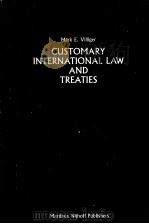
PART ONETHEORETICAL AND FACTUAL FRAMEWORK3
CHAPTER ONE A Modern Theory of Customary International Law3
A.What Constitutes State Practice?4
Ⅰ.In General4
Ⅱ.The Framework of the United Nations and of Diplomatic Conferences5
a)The Value of Statements5
b)Functions and Examples8
Ⅲ.Written Texts (Conventions, ILC Drafts etc.) as State Practice?10
Ⅳ.State Practice qua Contractual Obligation10
B.The Material Requirements of Customary Law12
Ⅰ.General Practice: Notion and Implications12
Ⅱ.The Practice of “Specially Affected” States13
Ⅲ.The Practice of Dissenting States15
a) Persistent Objectors15
b) Subsequent Objectors17
Ⅳ. Passive Conduct18
a) The Traditional View18
b) The Voluntarist Approach20
Ⅴ.Uniformity and Consistency of Practice22
Ⅵ.Duration of Practice24
C.Opinio juris25
Ⅰ.Concept25
Ⅱ.Evidence of opinio juris, the UN Framework and “Instant” Customary Law27
Ⅲ.The Formation of Customary Law29
D.Special Questions32
I.Desuetude and Modification of a Customary Rule32
Ⅱ.Special Customary Law33
Ⅲ.The Relationship between Customary Law and Treaties34
a)Is There a Hierarchy of Sources in International Law?34
b)Conflicts between Rules of Different Sources36
E.Conclusions37
CHAPTER TWOThe Factual Framework: Codification in Past and Present63
A.Efforts of Individuals and Private Organizations63
Ⅰ.Individual Efforts63
Ⅱ.Private Organizations64
B.Official Efforts Outside the United Nations65
Ⅰ.1815-191465
Ⅱ.The League of Nations (1919-1946)67
Ⅲ.Codification in the Inter-American System68
Ⅳ.Other OfficialBodies69
C.The UN International Law Commission70
Ⅰ.Establishment70
Ⅱ.Election and Composition71
Ⅲ.Functions71
Ⅳ.Discharge of Duties72
a)Selection of Topics72
b)Procedure73
c)Accomplishment of Work75
Ⅴ. Relations with States and other Bodies77
a) Direct Relations with States77
b) Relationship with the Sixth Committee and other Bodies77
Ⅵ. Review of Programme and Methods of Work78
Ⅶ. Appreciation79
a) The Position of the ILC in the Context of Sources79
b) Quantitative Appreciation: How Effective is the ILC?79
c) Selection of Topics81
d) The Composition of the Commission83
D. Other UN Bodies84
E. Evolution of the 1969 Vienna Convention86
Ⅰ. Professor BRIERLY's Reports (1950-1952)87
Ⅱ. Sir Hersch LAUTERPACHT's Reports(1953-1954)88
Ⅲ. Sir Gerald FITZMAURICE's Reports (1956-1960)88
Ⅳ. Sir Humphrey WALDOCK's Reports (1962-1966)89
a) Reports I-Ⅲ (1962-1964)89
b) Reports IV-Ⅵ (1965-1966)90
c) Appreciation91
V. The 1968/1969 Vienna Conference on the Law of Treaties92
a) Session of 196892
b) Session of 196993
c) Some Disputed Matters of Substance94
d) Conclusion and Entry into Force95
PART TWOINTERACTIONS BETWEEN CUSTOMARYAND CONVENTIONAL RULES117
CHAPTER THREECodification and Progressive Development of International Law (jus scriptum)117
A. The UN Framework117
Ⅰ. UN Charter Art. 13 subpara.1(a)117
Ⅱ. Response to UN Charter Art.13 subpara.1(a)118
a) The Committee on the Progressive Development of International Law and its Codification (1946/47)118
b) The ILC-Statute and the Practice of the ILC120
c) Doctrine121
B.The Concepts of Codification and Progressive Development122
Ⅰ.Codification122
Ⅱ.Progressive Development124
Ⅲ.“Agreement” and Codification125
Ⅳ.Appreciation126
C.The Freedom of the Drafting Body to Codify or Develop the Law127
D.Functions of jus scriptum128
Ⅰ.Clarity and Certainty128
Ⅱ.The Systematization of Law129
Ⅲ.Reform of Law129
CHAPTER FOURMethods of Codification139
A.Code of Rules139
Ⅰ.Basis of Validity and Authority139
Ⅱ.Attributes140
Ⅲ.Types of Codes141
B.UN General Assembly Resolutions142
Ⅰ.Basis of Validity and Authority142
Ⅱ.Attributes145
Ⅲ.Resolutions and Declarations of Other Bodies146
C.Conventions146
Ⅰ.Bases of Validity146
Ⅱ.Political and Scientific Authority148
Ⅲ.Implications of the Legal Character of Conventions149
a)Independent Source of Obligation149
b)The Convention as a Homogeneous Whole149
c)Universality of, and Equality before, the Contractual Obligation150
d)Questions of Ascertainment152
Ⅳ. Special Types of Treaties, or Combinations with Other Methods154
Ⅴ. Appreciation154
D. Relations between Conventional and Customary Law156
Ⅰ. Codificatory Conventional Rules156
a) Some Views on the Matter156
b) Criteria by which to Assess the Continuing Existence of a Customary Rule157
c) In Particular Conventions with Quasi-Universal Membership159
d) Implications160
Ⅱ. Customary Rules on the Same Subject-Matter but with Different Content; the expressio unius-maxim161
Ⅲ. Customary Rules on Subjects not Covered by the Convention162
Ⅳ. Effects of Conventions with Few Parties, or not in Force163
a) Reasons for Non-Acceptance163
b) Detrimental Effects on Customary Law163
Ⅴ. Embodiment of the Law of Treaties in a Convention163
CHAPTER FIVEGeneration of New Customary International Law183
A. Art. 38 of the 1969 Vienna Convention183
Ⅰ. Travaux preparatoires183
a) The Work of the ILC183
b) Practice of States185
Ⅱ. Interpretation of Art. 38 and Evaluation of Materials186
B. Jurisprudence of Tribunals and Doctrinal Writings187
C. Delimitations; Arts. 34-37 of the 1969 Vienna Convention189
D. Conditions of Generation189
Ⅰ. New Rules of a “Norm-Creating”, General Character189
Ⅱ. Superseding Agreements and “Special Circumstances”191
Ⅲ. Reasons for Generation192
E. The Process of Generation192
Ⅰ. Notion192
Ⅱ. Aspects of State Practice194
a) Practice of Parties and Non-Parties194
b) Treaties as State Practice: Questions of Quasi- Legislative Effects and of a “Copyright” of Parties195
c) Bilateral Treaties196
F. Appreciation197
CHAPTER SIXModification of Conventional Rules by Subsequent Customary Law207
A. ILC Drafts and the 1969 Vienna Convention207
Ⅰ. Art.68(c) of the 1964 ILC Draft207
a) Travaux preparatoires207
b) Appreciation209
Ⅱ. The Function of Art. 31 of the 1969 Vienna Convention210
Ⅲ. The Relevance of Art. 38 of the 1966 ILC Draft211
Ⅳ. The Relevance of Arts. 42 and 54 of the 1969 Vienna Convention211
B. State Practice, Jurisprudence of Tribunals and Doctrinal Writings213
C. Reasons for Modification214
D. Modification as the Result of the Formation of a New Customary Rule215
Ⅰ. The Conflict Between the Conventional and the Customary Rule215
a) How Does the Conflict Arise?215
b) Solution: Desuetude of the Conventional Rule;Customary Law as the lex posteriorc) Conflict with a Declaratory Conventional Rule217
d) Special Customary Law and Special Treaties217
Ⅱ.Origination and Formation of the New Customary Rule218
a) Derogation from, or Breach of, the Conventional Rule218
b) Modification through Interpretation and Adaptation219
Ⅲ. Implications of the Customary Basis of the New Rule220
a) Practice of Parties and Non-Parties220
b) Opinio juris and the Intention to Depart from the Conventional Rule221
c) Presumption Against Change; the Difficulty of Ascertaining Modification222
Ⅳ. Questions of Time223
E. Conclusions; Comparisons with Other Means of Amendment224
PART THREEINTERRELATIONS BETWEEN CUSTOMARY AND CONVENTIONAL RULES237
CHAPTER SEVENAscertainment of the Declaratory Quality of Conventional Rules237
A. Preliminary Remarks237
Ⅰ. Rules on Interpretation237
Ⅱ. When is Ascertainment Necessary?238
Ⅲ. The Value of Sweeping Statements238
B. The Strata of Materials239
Ⅰ. Pre-ILC Materials239
Ⅱ. Travaux preparatoires — the ILC Materials239
Ⅲ. Travaux preparatoires — State practice240
Ⅳ. Conventions240
a) Statements in the Conventional Text240
b) Statements in Preambles241
c) Other Indicators243
V. Subsequent State Practice244
C.The Techniques of Employing These Materials244
Ⅰ. Opinions of Cous and Writers244
Ⅱ. Appreciation of Professor BAXTER'S Approach245
Ⅲ. Evaluation247
Ⅳ. Criteria of Comparison; Delimitation Between Declaratory and Non-Declaratory ConventionalRules248
CHAPTER EIGHTEffects of the Declaratory Nature of Conventional Rules255
A. Effects of Declaratory Rules Before the Entry into Force of the Convention255
Ⅰ. Arts. 4 and 28 of the 1969 Vienna Convention255
a) Travaux preparatoires255
b) Evaluation257
Ⅱ. Notion258
B. Questions of Reservations259
Ⅰ. Reservations to Declaratory Rules259
a) Permissibility of Reservations259
b) The Value of Reservation Clauses261
c) The Applicable Law263
d) Effects of Reservations Upon the Underlying Customary Law264
Ⅱ. Reservations to Non-Declaratory Rules264
Ⅲ. Appreciation265
Ⅳ. Reservations to the 1969 Vienna Convention266
C. Influence of Customary and Conventional Rules on the Interpretation and Ascertainment of One AnotherI. The Framework of the 1969 Vienna Convention: Art. 31 subpara. 3(c)267
a) History267
b) Post-1969 Developments268
c) Interpretation268
d) Question of Declaratory Nature269
Ⅱ. Function of the Customary Rule for the Interpretation of the Conventional Rule269
Ⅲ. Function of the Conventional Rule for the Customary Rule270
D. Subsequent Changes in the Conventional Regime271
Ⅰ. The Framework of the 1969 Vienna Convention271
a) Art 43 — travaux preparatoires and Functions271
b) Function of Art.56273
c) Relationship of Art. 43 to Other Articles of the 1969 Vienna Convention274
Ⅱ. Effects of the Invalidity, Termination or Denunciation of a Convention or of the Suspensionof its Operation275
Ⅲ.Amendment of Conventional Rules276
E.Applicability of the 1969 Vienna Convention to Treaties and Subjects not within its Scope (VCT Art.3[b])276
CHAPTER NINEConclusions289
A.The Degree of Recognition of Customary Law in the State Community289
B.“Codification” and “Progressive Development”290
C.The Conservative Impact of jus scriptum upon Customary Law292
D.The Dynamic Impact of Customary Law upon jus scriptum292
E.Individualistic and Communal Interests of States294
F.Customary Law and Treaties as Sources of Law295
G.Identification of Customary Law297
H.Customary Law and the Present International Community298
Ⅰ.Codifi cation of the Interplay of Sources?299
PART FOURQUESTION OF THE DECLARATORYNATURE OF SELECTED ARTICLES OFTHE 1969 VIENNA CONVENTION307
INTRODUCTIONGeneral Statements on the 1969 Vienna Convention307
A.ILC307
B.State Practice308
C.International Tribunals and Doctrinal Writings309
D.Appreciation310
E.Position of the French Government310
CASE STUDY I:VCT Art. 18315
A.History315
Ⅰ.Pre-ILC Case-Law and Doctrine315
Ⅱ.ILC316
Ⅲ.State Practice318
B.Post-1969 Developments319
C.Appreciation320
D.Interpretation321
CASE STUDY Ⅱ:VCT Arts. 31 and 32327
A. History327
Ⅰ. Pre-ILC Doctrine and Case-Law327
Ⅱ. ILC328
Ⅲ. State Practice332
B. Post-1969 Developments334
Ⅰ. State Practice334
Ⅱ. Jurisprudence of Tribunals338
Ⅲ.Doctrinal Writings341
C. Appreciation342
D. Interpretation of Arts. 31 and 32343
Ⅰ.Art.31343
Ⅱ. Art.32345
CASE STUDY Ⅲ:VCT Art. 60357
A.History357
Ⅰ.Pre-ILC Doctrine and Case-Law357
Ⅱ.ILC358
Ⅲ.State Practice362
B.Post-1969 Developments365
Ⅰ.State Practice365
Ⅱ.Jurisprudence of Courts367
Ⅲ.Doctrinal Writings369
C.Appreciation369
D.Interpretation370
APPRECIATION IN THE CONTEXT OF SOURCES381
Argument387
Table of Treaties and Preparatory Materials395
Table of Cases403
Official Documents402
Bibliography409
Index421
1985《CUSTOMARY INTERNATIONAL LAW AND TREATIES》由于是年代较久的资料都绝版了,几乎不可能购买到实物。如果大家为了学习确实需要,可向博主求助其电子版PDF文件(由 1985 MARTINUS NIJHOFF PUBLISHERS 出版的版本) 。对合法合规的求助,我会当即受理并将下载地址发送给你。
高度相关资料
-
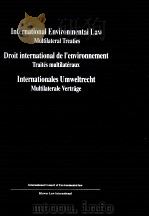
- LNTERNATIONAL ENVIRONMENTAL LAW MULTILATERAL TREATIES DROIT INTERNATIONAL DE I ENVIRONNEMENT TRAITES
- 1974 KLUWER LAW LNTERNATLONAL
-
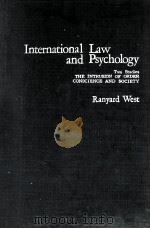
- INTERNATIONAL LAW AND PAYCHOLOGY
- 1974 OCEANA PUBLICATIONS INC
-

- THE TERMINATION AND REVISION OF TREATIES IN THE LIGHT OF NEW CUSTOMARY INTERNATIONAL LAW
- 1994 CLARENDON PRESS
-

- INTERNATIONAL LAW AND ORDER
- 1971 STEVENS & SONS
-

- Biodiversity and International Law
- 1992 IOS PRESS
-
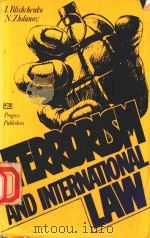
- TERRORISM AND INTERNATIONAL LAW
- 1984 PROGERSS PUBLISHERS MOSCOW
-

- International Law and United States Law
- 1999 Ashgate Dartmouth
-

- International Wildlife Law an Analysis of International Treaties Concerned With the Conservation of
- 1985 Cambridge University Press
-
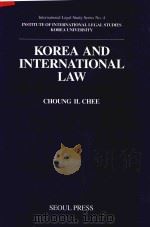
- Korea and International Law
- 1993 Korea University
-

- The International Law Commission 1949-1998 Volume Two:The Treaties Part II
- 1999 Oxford University Press
-

- SOCIAL FACTS AND FABRICATIONS “CUSTOMARY” LAW ON KILIMANJARO,1880-1980
- 1986 CAMBRIDGE UNIVERSITY PRESS
-
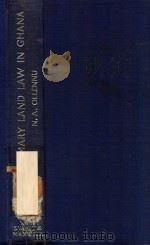
- PRINCIPLES OF CUSTOMARY LAND LAW IN GHANA
- 1962 SWEET & MAXWELL
-

- CUSTOMARY LAW IN THE CORPUS IURIS CANONICI
- 1990 MELLEN RESEARCH UNIVERSITY PRESS
-

- LNTERNATIONAL ENVIRONMENTAL LAW MULTILATERAL TREATIES DROIT INTERNATIONAL DE I ENVIRONNEMENT TRAITES
- 1974 KLUWER LAW LNTERNATLONAL
提示:百度云已更名为百度网盘(百度盘),天翼云盘、微盘下载地址……暂未提供。➥ PDF文字可复制化或转WORD
